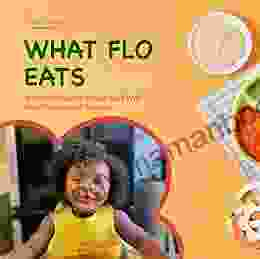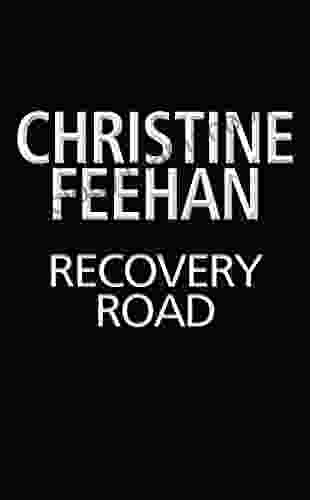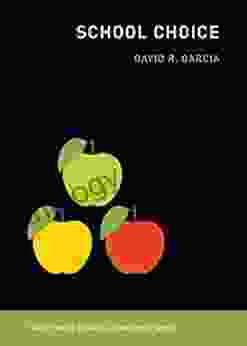School Choice: The MIT Press Essential Knowledge Series

School choice is a hot-button issue in education today. Proponents argue that it gives parents more options and helps children get a better education. Opponents worry that it will hurt public schools and lead to segregation. So what's the truth? What does the research say about school choice? And what are the different arguments for and against it?
This book provides a comprehensive overview of the history, research, and debates surrounding school choice. It is an essential resource for anyone interested in understanding the complex world of education policy.
5 out of 5
| Language | : | English |
| File size | : | 318 KB |
| Text-to-Speech | : | Enabled |
| Enhanced typesetting | : | Enabled |
| Word Wise | : | Enabled |
| Print length | : | 146 pages |
| Screen Reader | : | Supported |
The History of School Choice
The idea of school choice has been around for centuries. In the United States, the first school choice program was established in 1853 in Massachusetts. This program allowed towns to contract with private schools to provide education for children who lived in areas where there was no public school.
School choice programs continued to be established throughout the 20th century, but they were relatively small and limited in scope. In the 1990s, however, there was a resurgence of interest in school choice. This was due in part to the growing dissatisfaction with public schools and the increasing popularity of charter schools.
Charter schools are public schools that are independently operated. They are often smaller and more innovative than traditional public schools. Charter schools have been shown to be more effective than traditional public schools in some cases. This has led to a growing demand for school choice programs that allow parents to send their children to charter schools.
The Research on School Choice
There is a large and growing body of research on school choice. This research has shown that school choice programs can have a positive impact on student achievement. For example, a study by the Center for Education Reform found that students who attended charter schools were more likely to graduate from high school and attend college than students who attended traditional public schools.
However, the research on school choice is not entirely positive. Some studies have found that school choice programs can have negative consequences. For example, a study by the Brookings Institution found that students who attended voucher schools were more likely to be suspended or expelled than students who attended traditional public schools.
Overall, the research on school choice is mixed. There is evidence that school choice programs can have both positive and negative effects. The impact of a school choice program will depend on a variety of factors, including the design of the program and the quality of the schools that participate in the program.
The Arguments for and Against School Choice
There are a number of arguments for and against school choice. The main arguments in favor of school choice are that it gives parents more options and helps children get a better education. The main arguments against school choice are that it will hurt public schools and lead to segregation.
Arguments for school choice:
- Gives parents more options. School choice allows parents to choose the school that is best for their child. This means that parents can choose a school that is close to their home, that has a particular academic focus, or that has a particular religious affiliation.
- Helps children get a better education. There is evidence that school choice programs can improve student achievement. This is because school choice programs allow students to attend schools that are a better fit for their individual needs.
Arguments against school choice:
- Hurts public schools. School choice programs can divert funding away from public schools. This can lead to larger class sizes, fewer resources, and lower teacher salaries. All of these things can make it more difficult for public schools to provide a quality education.
- Leads to segregation. School choice programs can lead to segregation because they allow parents to choose schools that are predominantly white or affluent. This can make it more difficult for students from low-income or minority backgrounds to get a quality education.
The Future of School Choice
The future of school choice is uncertain. There is growing support for school choice programs, but there is also growing opposition. It is likely that the debate over school choice will continue for many years to come.
However, one thing is clear: school choice is here to stay. Parents are increasingly demanding more options for their children's education. And school choice programs are providing those options.
School choice is a complex issue with both pros and cons. There is evidence that school choice programs can have a positive impact on student achievement, but there is also evidence that they can have negative consequences. The impact of a school choice program will depend on a variety of factors, including the design of the program and the quality of the schools that participate in the program.
Ultimately, the decision of whether or not to support school choice is a personal one. Parents should weigh the pros and cons of school choice and decide what is best for their child.
5 out of 5
| Language | : | English |
| File size | : | 318 KB |
| Text-to-Speech | : | Enabled |
| Enhanced typesetting | : | Enabled |
| Word Wise | : | Enabled |
| Print length | : | 146 pages |
| Screen Reader | : | Supported |
Do you want to contribute by writing guest posts on this blog?
Please contact us and send us a resume of previous articles that you have written.
 Top Book
Top Book Novel
Novel Fiction
Fiction Nonfiction
Nonfiction Literature
Literature Paperback
Paperback Hardcover
Hardcover E-book
E-book Audiobook
Audiobook Bestseller
Bestseller Classic
Classic Mystery
Mystery Thriller
Thriller Romance
Romance Fantasy
Fantasy Science Fiction
Science Fiction Biography
Biography Memoir
Memoir Autobiography
Autobiography Poetry
Poetry Drama
Drama Historical Fiction
Historical Fiction Self-help
Self-help Young Adult
Young Adult Childrens Books
Childrens Books Graphic Novel
Graphic Novel Anthology
Anthology Series
Series Encyclopedia
Encyclopedia Reference
Reference Guidebook
Guidebook Textbook
Textbook Workbook
Workbook Journal
Journal Diary
Diary Manuscript
Manuscript Folio
Folio Pulp Fiction
Pulp Fiction Short Stories
Short Stories Fairy Tales
Fairy Tales Fables
Fables Mythology
Mythology Philosophy
Philosophy Religion
Religion Spirituality
Spirituality Essays
Essays Critique
Critique Commentary
Commentary Glossary
Glossary Bibliography
Bibliography Index
Index Table of Contents
Table of Contents Preface
Preface Introduction
Introduction Foreword
Foreword Afterword
Afterword Appendices
Appendices Annotations
Annotations Footnotes
Footnotes Epilogue
Epilogue Prologue
Prologue Geoffrey Darnton
Geoffrey Darnton John Heil
John Heil Mike Kim
Mike Kim Yasmin Akhtar
Yasmin Akhtar Peter Jay Black
Peter Jay Black Gurcharan Das
Gurcharan Das David Mamet
David Mamet Noor Shirazie
Noor Shirazie Brittany White
Brittany White Clement Clarke Moore
Clement Clarke Moore J L Brown
J L Brown George Manos
George Manos Bernard Knight
Bernard Knight Cindy Stringer Wismer
Cindy Stringer Wismer Mel Starr
Mel Starr Wish Ronquillo Peacocke
Wish Ronquillo Peacocke J Lynn Hicks
J Lynn Hicks Fiona Grace
Fiona Grace Charles Larpenteur
Charles Larpenteur Sarah Mahmood
Sarah Mahmood
Light bulbAdvertise smarter! Our strategic ad space ensures maximum exposure. Reserve your spot today!

 Clark CampbellSir John Hawkwood: A Chivalrous Mercenary in the Heart of the White Company
Clark CampbellSir John Hawkwood: A Chivalrous Mercenary in the Heart of the White Company Emmett MitchellFollow ·12.3k
Emmett MitchellFollow ·12.3k Javier BellFollow ·10.3k
Javier BellFollow ·10.3k Gerald BellFollow ·11.6k
Gerald BellFollow ·11.6k Jules VerneFollow ·17.3k
Jules VerneFollow ·17.3k Jamal BlairFollow ·9.5k
Jamal BlairFollow ·9.5k Robin PowellFollow ·2.4k
Robin PowellFollow ·2.4k Octavio PazFollow ·9.3k
Octavio PazFollow ·9.3k Bobby HowardFollow ·6.1k
Bobby HowardFollow ·6.1k

 Vernon Blair
Vernon BlairThe Woman I Met in My Dream: An Unforgettable Night of...
As the veil of night...

 Carlos Fuentes
Carlos FuentesThe Ultimate Guide to Healthy Eating for Toddlers: Meal...
As a parent of a...

 Peter Carter
Peter CarterInside My Autistic Mind: A Journey of Self-Discovery and...
Autism spectrum disorder (ASD) is a...

 Isaac Asimov
Isaac AsimovA Journey Through Jane Austen's Literary Masterpieces:...
Jane Austen, the renowned English...

 Hank Mitchell
Hank MitchellAdvancements in Textiles: Science and Technology by...
The textile...

 Troy Simmons
Troy SimmonsRecovery Road: An Odyssey of Hope and Redemption by...
Recovery Road is a...
5 out of 5
| Language | : | English |
| File size | : | 318 KB |
| Text-to-Speech | : | Enabled |
| Enhanced typesetting | : | Enabled |
| Word Wise | : | Enabled |
| Print length | : | 146 pages |
| Screen Reader | : | Supported |










